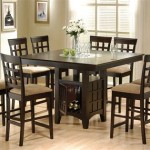Vegetables That Can Be Grown in Flower Pots
Cultivating a vegetable garden is often perceived as a venture requiring expansive land and dedicated resources. However, the reality is that a considerable variety of vegetables can thrive in the confined space of flower pots, presenting a practical solution for urban dwellers, individuals with limited garden space, or those seeking a more manageable approach to gardening. This article explores the diverse range of vegetables amenable to container gardening, providing insights into their specific requirements and the benefits of growing vegetables in pots.
Container gardening offers several advantages. It allows for greater control over soil composition and drainage, mitigating the risks associated with poor soil quality often found in urban areas. Furthermore, container gardens are mobile, enabling relocation to optimize sunlight exposure or protect plants from adverse weather conditions. The reduced space also minimizes weeding and pest management efforts, making it an appealing option for novice gardeners and those with busy schedules. Choosing the right vegetables for container gardening is crucial for success.
Selecting Appropriate Vegetable Varieties
The key to successful container gardening lies in selecting vegetable varieties that are naturally compact, dwarf, or bush-type, as these tend to be better suited for the limited root space provided by pots. Vine-type vegetables can also be grown but may require trellises or other support structures to manage their growth habit. Certain larger vegetables, such as pumpkins or full-sized watermelons, are generally not ideal for container gardening due to their extensive root systems and space requirements.
Consider the "determinate" versus "indeterminate" growth habit when choosing tomato plants. Determinate tomato varieties grow to a fixed size and produce their fruit all at once, making them ideal for smaller pots. Indeterminate varieties, on the other hand, continue to grow and produce fruit throughout the growing season, requiring larger containers and consistent support.
Lettuce, spinach, and other leafy greens are exceptionally well-suited for container gardening. Their shallow root systems and relatively quick growth cycles make them ideal candidates for pots. Bush beans and dwarf pea varieties are also good choices, as they produce high yields in compact spaces. Peppers, particularly smaller varieties like chili peppers or bell peppers, thrive in containers with adequate sunlight and well-draining soil.
Root vegetables such as radishes, carrots, and beets can be successfully grown in pots, provided the containers are deep enough to accommodate their root development. Select varieties with shorter root lengths to maximize space efficiency. Herbs, while technically not vegetables, are often grown alongside vegetables and are particularly well-suited for container gardening, requiring relatively little space and offering a wide range of culinary benefits.
Optimizing Growing Conditions
Once appropriate vegetable varieties have been selected, optimizing growing conditions is essential for healthy growth and abundant yields. This includes choosing the right pot size and material, using appropriate soil mixes, ensuring adequate drainage, providing sufficient sunlight, and implementing proper watering and fertilization practices.
Pot size is a critical factor. The size of the pot directly impacts the amount of space available for root growth. Generally, larger pots are preferable, as they provide greater stability and reduce the frequency of watering. However, it is important to select a pot size that is appropriate for the specific vegetable variety being grown. For example, leafy greens may thrive in smaller pots, while tomatoes and peppers require larger containers.
Pot material also plays a role. Clay pots are porous and allow for good aeration, but they also dry out more quickly than plastic pots. Plastic pots are less expensive and retain moisture better, but they may not provide as much aeration. Consider the climate and frequency of watering when choosing pot material. Regardless of the material, ensure that the pot has drainage holes to prevent waterlogging, which can lead to root rot.
The soil mix used in container gardening should be lightweight, well-draining, and rich in organic matter. Garden soil is generally too heavy for containers and can become compacted, hindering root growth. A mixture of potting soil, compost, and perlite or vermiculite provides an ideal balance of drainage, aeration, and nutrient retention. Avoid using soil from areas that may be contaminated.
Sunlight is a crucial requirement for vegetable growth. Most vegetables require at least six to eight hours of direct sunlight per day. Place containers in a location that receives ample sunlight. If natural sunlight is limited, consider using supplemental grow lights to provide the necessary illumination. Rotate pots periodically to ensure even exposure to sunlight.
Watering and fertilization are also critical for successful container gardening. Vegetables in pots tend to dry out more quickly than those grown in the ground, requiring more frequent watering. Check the soil moisture regularly and water thoroughly when the top inch of soil feels dry. Avoid overwatering, as this can lead to root rot. Fertilize regularly with a balanced fertilizer to provide the necessary nutrients for growth and fruit production. Follow the instructions on the fertilizer label to avoid over-fertilizing, which can damage plants.
Pest and Disease Management in Container Gardens
While container gardens are generally less susceptible to pests and diseases than traditional gardens, they are not entirely immune. Implementing proactive pest and disease management strategies is essential for maintaining healthy plants and maximizing yields. This includes monitoring plants regularly for signs of infestation or disease, using organic control methods, and practicing good sanitation.
Regularly inspect plants for signs of pests, such as aphids, spider mites, whiteflies, and caterpillars. If pests are detected, take action immediately to prevent them from spreading. Common organic control methods include hand-picking pests, spraying plants with insecticidal soap or neem oil, and introducing beneficial insects, such as ladybugs and lacewings. Avoid using broad-spectrum pesticides, as these can harm beneficial insects.
Diseases are also a potential problem in container gardens. Common diseases include powdery mildew, fungal leaf spots, and root rot. Prevent diseases by providing good air circulation, avoiding overwatering, and using disease-resistant varieties. If diseases are detected, remove affected leaves or plants to prevent the spread of the disease. Fungicides can be used to control fungal diseases, but use them sparingly and follow the instructions on the label carefully.
Good sanitation practices are essential for preventing both pests and diseases. Remove dead leaves and debris from around the plants regularly. Clean pots and tools thoroughly before using them. Avoid using soil from areas that may be contaminated. Rotate crops each year to prevent the buildup of pests and diseases in the soil.
By selecting appropriate vegetable varieties, optimizing growing conditions, and implementing proactive pest and disease management strategies, individuals can successfully cultivate a thriving vegetable garden in flower pots, regardless of their space limitations or gardening experience. Container gardening provides a convenient and rewarding way to grow fresh, healthy vegetables at home.

Vegetables You Can Grow In Small Pots Space Gardening

20 Best Vegetables For Container Gardening A Piece Of Rainbow
Vegetables In Containers Rhs Gardening

How To Grow Organic Vegetables In Pots About The Garden

The Best 11 Vegetables To Grow In Pots And Containers Gardener S Path

Easiest Vegetables To Grow In Flower Pots

Container Gardening Ten Easy Vegetables To Grow In Pots And How Do It Growing Family

Choosing The Best Containers For Growing Vegetables

Growing Vegetables In Pots Containers Saga

How To Grow Veggies In Pots And Planters At Home








